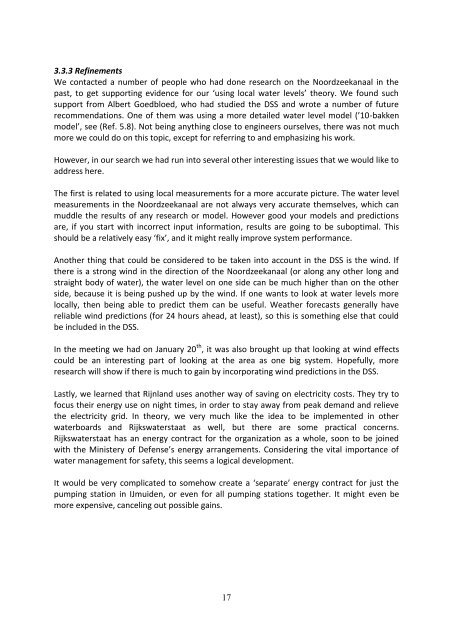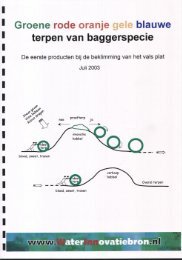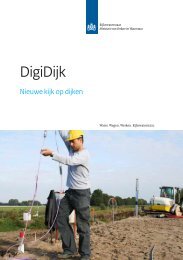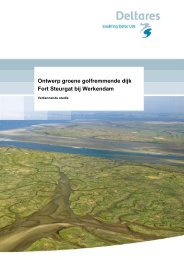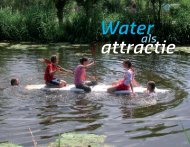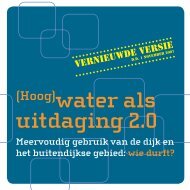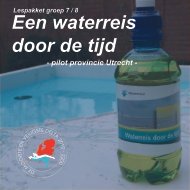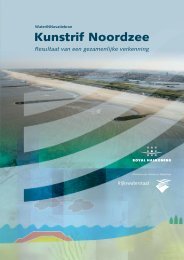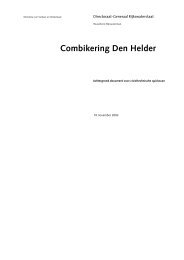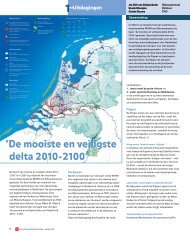Creating opportunities to adapt to climate change through innovative ...
Creating opportunities to adapt to climate change through innovative ...
Creating opportunities to adapt to climate change through innovative ...
You also want an ePaper? Increase the reach of your titles
YUMPU automatically turns print PDFs into web optimized ePapers that Google loves.
3.3.3 RefinementsWe contacted a number of people who had done research on the Noordzeekanaal in thepast, <strong>to</strong> get supporting evidence for our ‘using local water levels’ theory. We found suchsupport from Albert Goedbloed, who had studied the DSS and wrote a number of futurerecommendations. One of them was using a more detailed water level model (’10-bakkenmodel’, see (Ref. 5.8). Not being anything close <strong>to</strong> engineers ourselves, there was not muchmore we could do on this <strong>to</strong>pic, except for referring <strong>to</strong> and emphasizing his work.However, in our search we had run in<strong>to</strong> several other interesting issues that we would like <strong>to</strong>address here.The first is related <strong>to</strong> using local measurements for a more accurate picture. The water levelmeasurements in the Noordzeekanaal are not always very accurate themselves, which canmuddle the results of any research or model. However good your models and predictionsare, if you start with incorrect input information, results are going <strong>to</strong> be suboptimal. Thisshould be a relatively easy ‘fix’, and it might really improve system performance.Another thing that could be considered <strong>to</strong> be taken in<strong>to</strong> account in the DSS is the wind. Ifthere is a strong wind in the direction of the Noordzeekanaal (or along any other long andstraight body of water), the water level on one side can be much higher than on the otherside, because it is being pushed up by the wind. If one wants <strong>to</strong> look at water levels morelocally, then being able <strong>to</strong> predict them can be useful. Weather forecasts generally havereliable wind predictions (for 24 hours ahead, at least), so this is something else that couldbe included in the DSS.In the meeting we had on January 20 th , it was also brought up that looking at wind effectscould be an interesting part of looking at the area as one big system. Hopefully, moreresearch will show if there is much <strong>to</strong> gain by incorporating wind predictions in the DSS.Lastly, we learned that Rijnland uses another way of saving on electricity costs. They try <strong>to</strong>focus their energy use on night times, in order <strong>to</strong> stay away from peak demand and relievethe electricity grid. In theory, we very much like the idea <strong>to</strong> be implemented in otherwaterboards and Rijkswaterstaat as well, but there are some practical concerns.Rijkswaterstaat has an energy contract for the organization as a whole, soon <strong>to</strong> be joinedwith the Ministery of Defense’s energy arrangements. Considering the vital importance ofwater management for safety, this seems a logical development.It would be very complicated <strong>to</strong> somehow create a ‘separate’ energy contract for just thepumping station in IJmuiden, or even for all pumping stations <strong>to</strong>gether. It might even bemore expensive, canceling out possible gains.17


